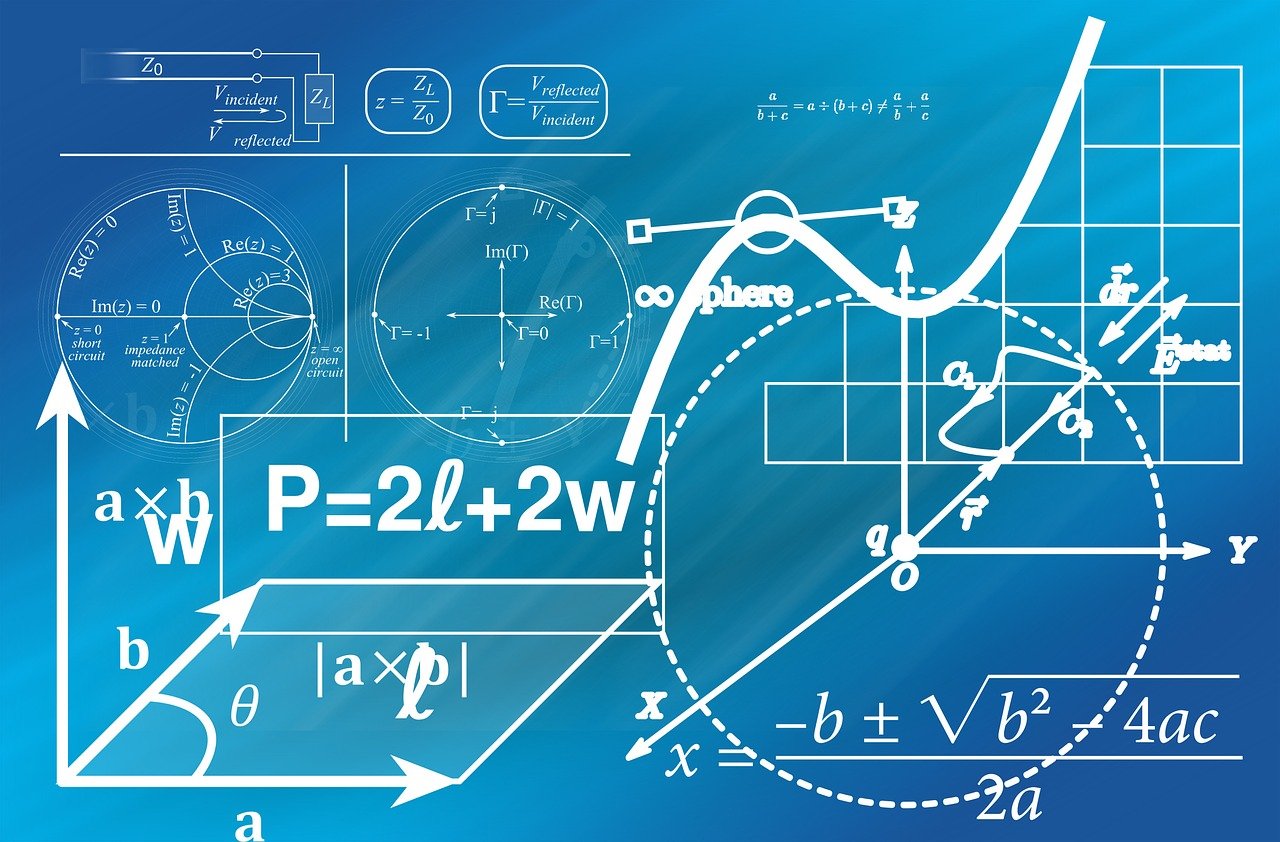Importance of Math in Data Science
Mathematics is the foundation of data science. It provides the necessary tools for analyzing and interpreting data, allowing us to make informed decisions and predictions. From statistical analysis to machine learning algorithms, math is essential in unlocking the insights hidden within the data.
Mathematical concepts essential for Data Science
In data science, mathematical concepts play a crucial role in analyzing and interpreting data. Some key mathematical concepts include probability theory, linear algebra, calculus, and statistics. These concepts help us understand and manipulate data, build models, and make accurate predictions.
Applications of Math in Data Science
In my experience as a data scientist, I have found that math plays a crucial role in various applications of data science. Some of the key applications where math is essential include:
- Probability and Statistics: Understanding probability and statistical concepts is crucial for analyzing and interpreting data, identifying patterns, and making accurate predictions.
- Linear Algebra: Linear algebra is used for dimensionality reduction, feature selection, and understanding the relationships between variables in a dataset.
- Calculus: Calculus is used for optimization algorithms, such as gradient descent, which are essential for training and fine-tuning machine learning models.
- Data Modeling: Mathematical modeling techniques, such as regression analysis, time series analysis, and decision trees, are used to create models that can make predictions and uncover insights from data.
- Neural Networks: Deep learning, a subfield of machine learning, heavily relies on mathematical concepts like matrix operations, calculus, and linear algebra to build and train complex neural network architectures.
- Natural Language Processing: In NLP tasks such as sentiment analysis and text classification, mathematical concepts like probability and statistics are used to process and analyze textual data.
- Image and Video Analysis: Various mathematical techniques, such as matrix operations and Fourier analysis, are used to extract features and analyze visual data in tasks like object detection and image recognition.
Mathematics provides the foundation for understanding and working with data in meaningful ways. As a data scientist, having a strong grasp of mathematical concepts allows for more accurate and reliable analysis and enables the development of robust models and insights.
Key Data Science Principles
In my experience as a data scientist, there are key principles that guide successful data science projects. These principles include understanding the fundamentals of data science, conducting thorough data analysis, and applying statistical methods to gain insights and make informed decisions. Additionally, having a strong understanding of machine learning algorithms and how they are influenced by mathematical concepts is crucial. Furthermore, effective data visualization techniques are essential for effectively communicating findings and presenting data-driven insights. Finally, it is important to continuously refine and update skills to stay current with the ever-evolving field of data science. By adhering to these principles, data scientists can drive impactful and successful projects.
Understanding Data Science fundamentals
Understanding the fundamentals of Data Science is crucial for success in the field. It involves learning about data collection, cleaning, and transformation, as well as techniques for data analysis and interpretation. Familiarity with programming languages like Python and R, as well as tools like SQL, is essential for working with large datasets. Additionally, knowledge of statistical concepts, machine learning algorithms, and data visualization techniques is necessary for extracting actionable insights from data. Developing a strong foundation in these fundamentals is key to becoming an effective data scientist.
Importance of data analysis in problem-solving
In my experience as a data scientist, data analysis plays a crucial role in problem-solving. It provides valuable insights, uncovers patterns and trends, and helps make informed decisions based on evidence. Analyzing data allows us to understand the problem at hand, identify potential solutions, and evaluate their effectiveness. It enables us to maximize efficiency, optimize processes, and drive innovation. Data analysis empowers us to make data-driven decisions, leading to more accurate outcomes and better problem-solving strategies.
Statistical Analysis in Data Science
Statistical analysis is a critical component of data science. It involves applying various statistical methods to analyze and interpret data, uncovering patterns, relationships, and trends. By using statistical techniques, data scientists can make data-driven decisions and draw meaningful conclusions from complex datasets. This enables them to gain valuable insights, validate hypotheses, and measure the effectiveness of solutions. Statistical analysis also helps in predicting future outcomes and making informed decisions based on data evidence.
Role of statistics in Data Science
In my experience as a data scientist, I have found that statistics plays a crucial role in data science. It helps in analyzing and interpreting data, identifying patterns and trends, testing hypotheses, and making informed decisions based on data evidence. Statistical methods enable us to draw meaningful conclusions from complex datasets, validate our findings, and measure the effectiveness of solutions. Without a solid foundation in statistics, it would be challenging to make data-driven decisions and gain valuable insights from the data.
Common statistical methods used in data analysis
Common statistical methods used in data analysis include descriptive statistics (mean, median, mode), inferential statistics (hypothesis testing, regression), and probability distributions (normal, binomial, Poisson). These methods help in drawing conclusions and making predictions from data.
Machine Learning Basics
Machine Learning Basics:
The creation of techniques that allow computers to learn from data and make predictions without explicit programming is known as machine learning, a subfield of artificial intelligence. It utilizes mathematical and statistical techniques to analyze and interpret patterns in data, enabling the creation of models that can make accurate predictions or decisions. The key steps involved in machine learning are data collection, data preprocessing, feature selection and engineering, model training, and model evaluation. Various algorithms such as decision trees, support vector machines, neural networks, and random forests are used to build these models. Machine learning has a wide range of applications across industries, including image and speech recognition, recommendation systems, fraud detection, and predictive maintenance.
Overview of Machine Learning algorithms
In machine learning, various algorithms are used to build models that can make accurate predictions or decisions. These algorithms include decision trees, support vector machines, neural networks, and random forests. Each algorithm has its own strengths and weaknesses, and the choice of algorithm depends on the specific problem and the type of data available. The algorithms are trained using historical data and then used to predict outcomes or make classifications on new, unseen data. Evaluation metrics are used to assess the performance of the models and determine their accuracy and effectiveness.
How math contributes to Machine Learning models
Math plays a crucial role in the development and implementation of Machine Learning models. It provides the foundation for understanding algorithms, optimizing model parameters, and evaluating model performance. Mathematical concepts like linear algebra and calculus are used to represent and manipulate data, while probability theory is utilized for making predictions and estimating uncertainties. Additionally, mathematical optimization techniques are employed to fine-tune model parameters, improving the overall accuracy and efficiency of Machine Learning models. Without a solid understanding of math, it would be challenging to build effective and reliable Machine Learning systems.
Data Visualization Techniques
Data visualization techniques are crucial in Data Science as they help in presenting insights from data in a visually appealing and understandable way. Techniques like scatter plots, bar charts, and heatmaps can effectively convey patterns, correlations, and trends in data. Visualizations aid in identifying outliers, understanding data distributions, and making informed decisions based on the data. Tools like Tableau, Power BI, and matplotlib are commonly used to create visually compelling data visualizations.
Importance of data visualization in Data Science
Data visualization is essential in Data Science as it enables me to effectively communicate complex patterns and trends in data. Visualizations make it easier to interpret and understand data, enabling more informed decision-making.
Popular tools for data visualization
Some popular tools for data visualization include Tableau, Power BI, Python libraries such as Matplotlib and Seaborn, and R programming language with packages like ggplot2. These tools offer a wide range of visualization options to effectively communicate insights from data.
In conclusion, a strong foundation in math is crucial for success in data science. Math provides the necessary tools for data analysis, statistical modeling, and machine learning. By mastering math skills, aspiring data scientists can unlock the full potential of their data-driven career.
The intersection of Math and Data Science
As a data scientist, my work heavily relies on math. Math provides the foundational principles and analytical tools needed to make sense of complex data sets and build accurate models. Whether it’s statistical analysis, machine learning algorithms, or data visualization techniques, math plays a central role in every step of the data science process. By understanding and mastering mathematical concepts, I am equipped to efficiently analyze, interpret, and communicate insights from data.
Tips for mastering Math skills for Data Science careers
As a data scientist, I have found these tips helpful in mastering math skills for a successful career in data science:
- Strengthen your foundation: Solid understanding of math fundamentals like algebra, calculus, and probability theory is crucial. Take online courses or seek help from math tutors if needed.
- Practice regularly: Regular practice is key to improving math skills. Solve math problems, work on data analysis projects, and engage in coding exercises to reinforce your mathematical knowledge.
- Utilize online resources: Take advantage of online platforms like Khan Academy, Coursera, and Udemy that offer math courses and data science tutorials. These resources provide comprehensive learning materials and exercises.
- Apply math to real-world problems: Practice applying mathematical concepts to solve real-world data science problems. This will enhance your critical thinking abilities and strengthen your problem-solving skills.
- Collaborate with peers: Join online communities and forums where you can collaborate with fellow data scientists. Discussing math concepts and sharing insights can help deepen your understanding and broaden your perspectives.
- Keep learning: Math is a constantly evolving field, so keep up with the latest research and developments. Stay updated on new statistical methods, machine learning algorithms, and data visualization techniques.
- Be persistent: Mastering math skills takes time and effort. Stay persistent and don’t get discouraged by challenges. The more you practice and immerse yourself in math, the better you will become.





